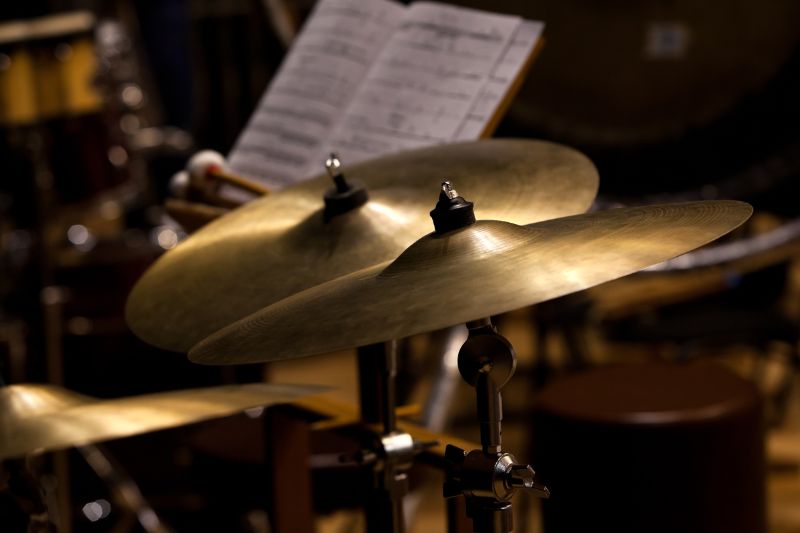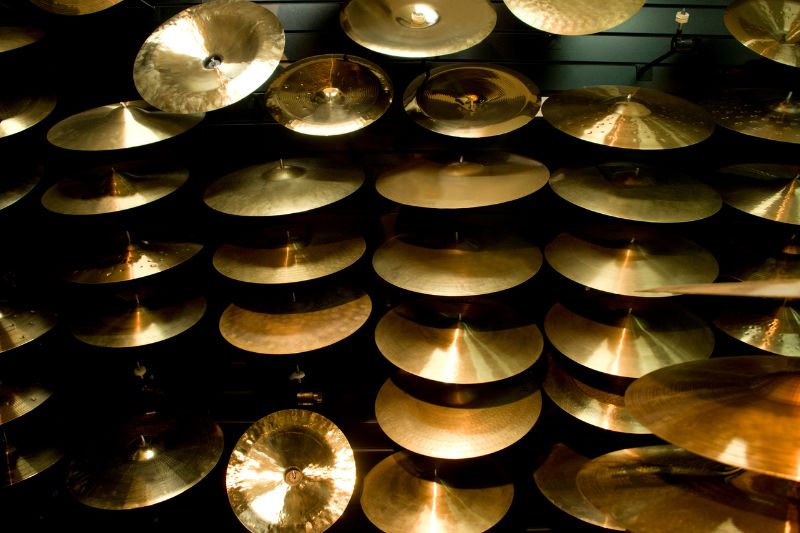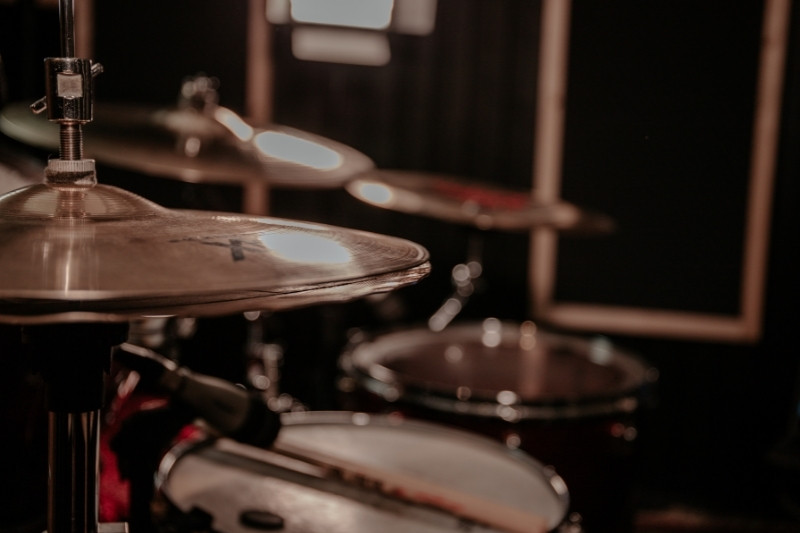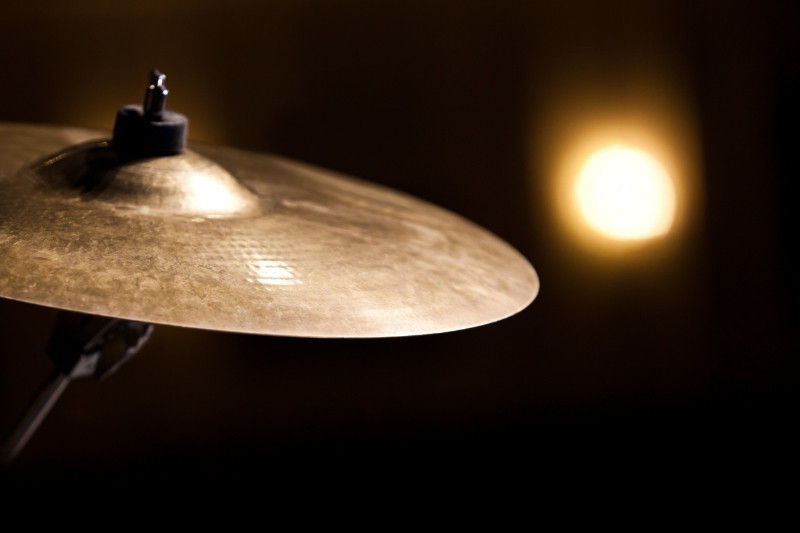How to Play the Cymbals on Your Drum Set
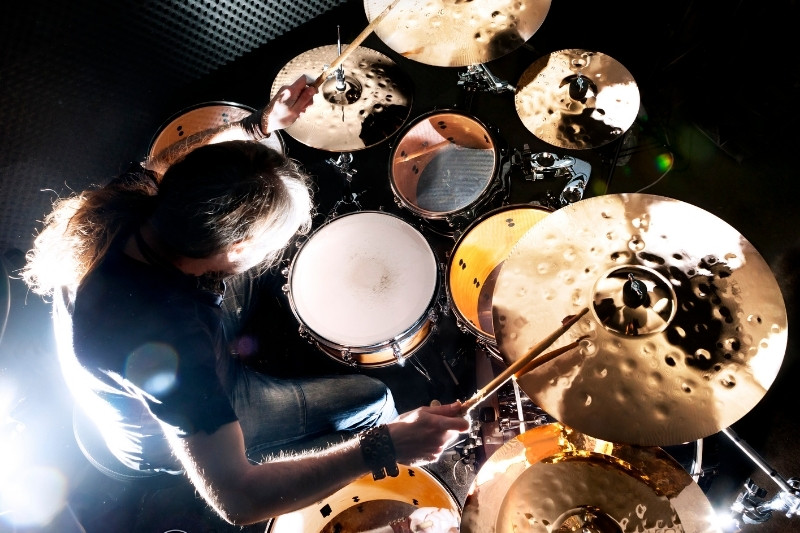
Cymbals are nice little additions to your drum set. They allow you to spice up your beats and can also give them character. The three most frequently used ones you will encounter are the hi-hat, the crash, and the ride cymbal.
This article will tell you how to properly hit the cymbals on your drum kits to make them sound great and to reduce the possibility of them becoming cracked prematurely.
Firstly, we’re going to talk about the mechanics of actually hitting the cymbals, and the best techniques to do so.
After that, we will talk about cymbal placement, dynamics, and how loud the volume of your hits should be in comparison to the drums and the rest of the cymbals. Proper dynamics in cymbal playing separates the beginners from the pros.
There are three parts to most cymbals:
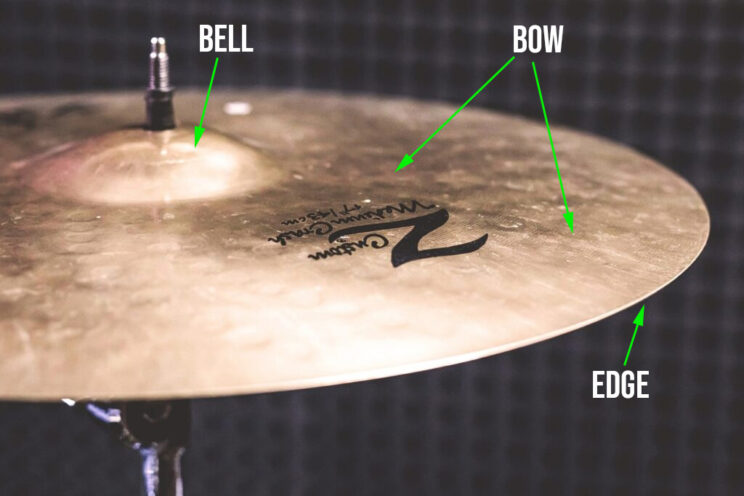
- Edge – The outer edge of the cymbal. You strike this with the shoulder of your drumstick.
- Bow – Most of the surface area of the cymbal is called the bow. You strike this with the tip of your drumstick.
- Bell – The raised area very close to the center hole is called the bell – some cymbals have very small bells or don’t have them at all. You strike this with the shoulder or shaft of your drumstick.
Contents
Optimal Cymbal Placement
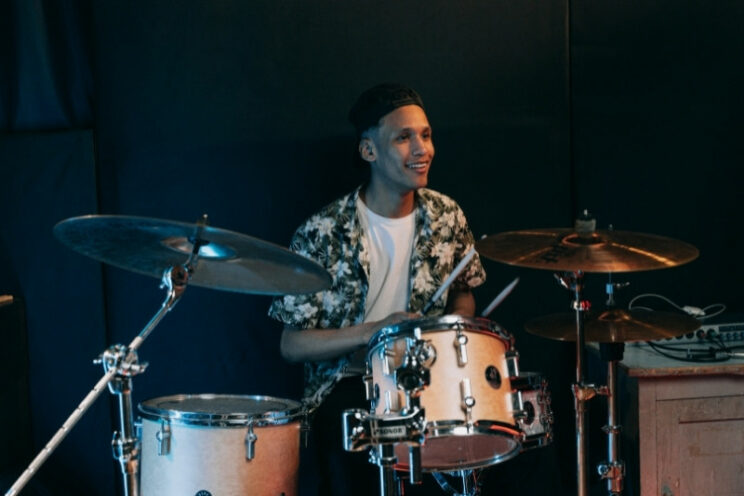
There is a certain standard as to how cymbals are usually placed on almost any drum set. This is a standard for a reason. This optimal choice is comfortable and makes use of the placement in a way that just feels right.
Usually, if you’re a right-handed player, the hi-hat will be on the left side of the snare because your right hand has the most stability and therefore will result in a much smoother playing and keeping of tempo.
The ride cymbal is usually placed on the right side, right behind your floor tom, and just above it with an angle leaning slightly towards you. This is because your right hand can extend and easily play the ride cymbal with fluent motion.
The crash cymbal is most likely placed behind the hi-hat and toms somewhere in the middle. This is also because of accessibility and not too far for a power stroke to successfully emphasize crash hits.
Hi-hat
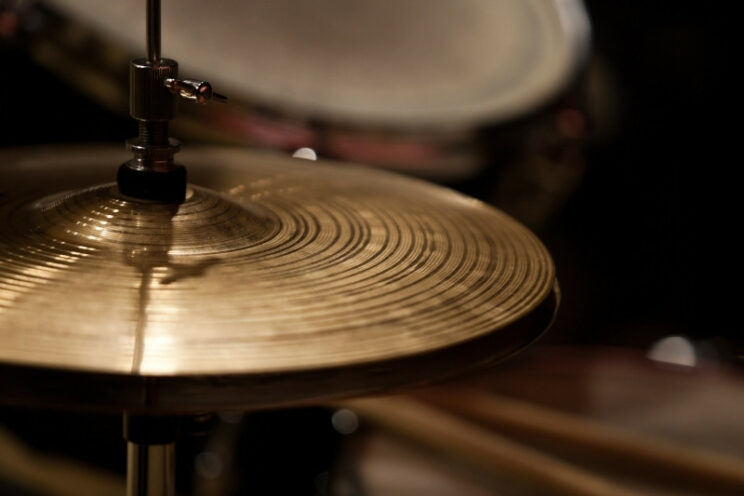
You should generally hit the hi-hat using the tip of your drumstick against the bow of the cymbal.
To play louder and more accented strokes, you should strike the edge of your hi-hat with the shoulder of your drumstick. This can make a trashy sound and cut through in the mix.
Drummers in genres such as hard-rock and metal often primary strike near the edge of the hi-hat using the shoulder of their drumsticks.
You should also play around with grooves that involved pressing and releasing the hi-hat while you are hitting them with your sticks.
The hi-hat should be hit with less volume than the rest of the drums. This also depends on the type of hats that you’re using because some of them can be very loud.
For most genres, you need to hit these a little bit lighter than you would hit your Toms or snare drum.
If you’re looking for good options and are thinking of buying/upgrading, you should check out this article about the best hi-hat cymbals.
Ride Cymbal
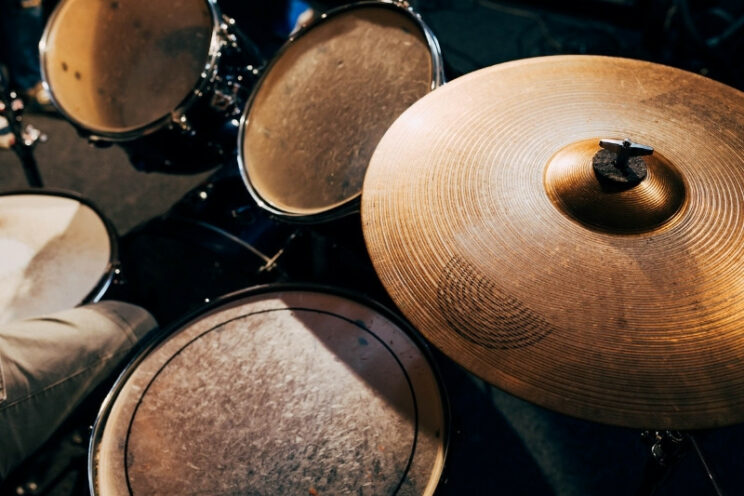
The ride cymbal can be struck in different ways. The most common way is to use the tip of your cymbal against the bow of the cymbal.
You can play around with different placements, if you head closer to the center of the cymbal, it will lead to a higher paying and attack. Towards the edge of the cymbal, it will lead to more sustained notes.
You can also hit the ride cymbal by striking the side or edge of the cymbal using the shoulder or shaft of your drumstick.
This is effectively like crashing the ride cymbal. And in rock or metal styles, they can heavily play the cymbal in this manner.
Keep in mind that the ride cymbal is usually a very large one. Therefore, it sustains and resonates for quite a long time after you hit it loudly.
Depending on your mix you might need to choke cymbal. If you’re moving on or finishing a song.
The bell is the center of the cymbal and on money ride cymbals, this can be quite large. You can strike this using the shoulder of the rim of your drumstick. This can produce a very loud ping effect.
You should also make sure to not hit your ride cymbal as hard as the drums on your set. Crashing a ride cymbal too much can drown out the rest of the drum set. This is particularly true when striking the bell of the cymbal.
Practice intricate patterns on your ride cymbal. The ride cymbal is an exceptionally fun cymbal to play. It has so many levels of dynamics and so many different sounds that you can make due to its large surface area and sustain.
If you’re on the look for a good ride cymbal, check out this article about the best ride cymbals on the market today.
Crash cymbal
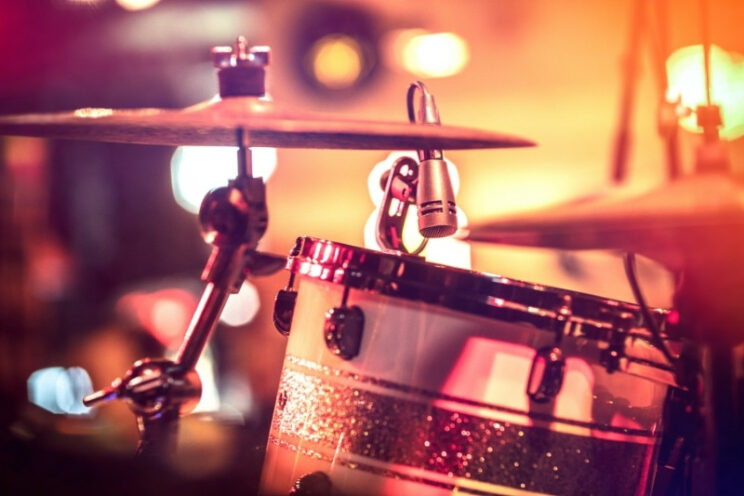
You should glance the crash cymbal across the edge, using the shaft or shoulder of your drumstick.
If you strike the cymbal head-on, it has a much higher chance of cracking prematurely.
You generally do not hit your crash cymbal using the tip of your drumstick. It’s almost always with the shaft or shoulder.
Use your crash cymbal tastefully. Do not hit us too often, unless this is exactly what your genre expects beginner drummers hit the crash cymbal often far too hard, often at the end of most bars or fills.
Although this can be quite fun to do it becomes quite tiring for the audience to play crush them with their use for accents and for emphasizing certain sections of a song, so use it sparingly.
If you want to see some of the options on the market today, check out this article about the best crash cymbals.
Other cymbals – Splash, China
Another way to spice up your drum sounds is to incorporate a few new additions to your drum kit. Splash and China cymbals are a good way to go. They are played in a very similar way to the way you hit a crash cymbal.
If you want good options, you can check out the best splash cymbals, or if you want a china cymbal, then you can also see some of the best china cymbals on the market today.
Practice keeping time with your hi-hats
When you’re not playing your hi-hats, such as when you are playing a groove with your ride cymbal, then you should try to keep time with your hi-hat pedal.
Press the hi-hat pedal every beat (or every second beat), which can improve your coordination and independence. Get used to counting out loud while you’re doing this, this is quite difficult at the start because you need to coordinate even more. Also, finally, do all of this while practicing to a metronome.
Summary
Cymbals are good additions to a drum kit, and understanding how to use them well is a great way to advance as a drummer.
Keeping in mind the three most famously used ones, the ride cymbal, the crash cymbal, and the hi-hat, you should practice those three as much as possible.
As far as other cymbals go such as splash and china, they can give a lot of variety to your drum sound, and adding them is another way to spice up your drum kit.
Practicing with a metronome is very helpful when you are getting used to playing on time. You can even set it to various speeds while practicing. Also, counting out loud while practicing coordination helps improve your independence and develop better timing.

